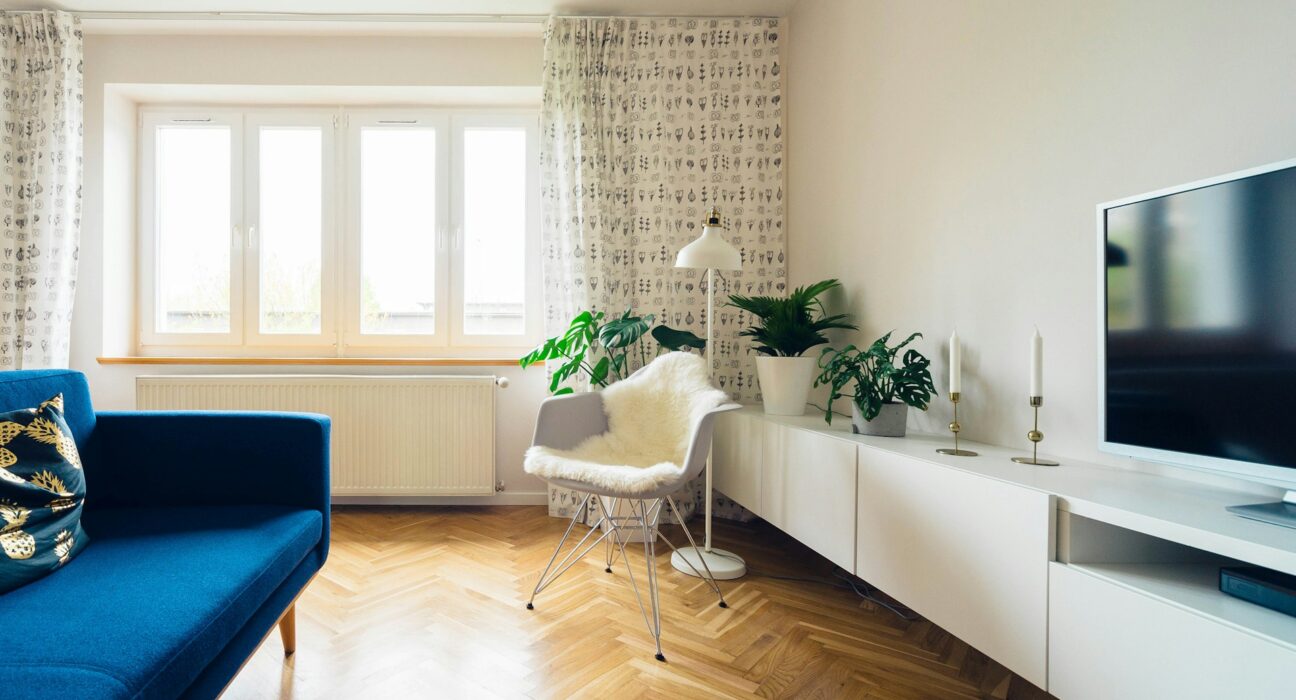Creating a minimalist home while accommodating the needs of a busy family might seem impossible. Between kids’ toys, school supplies, and the endless accumulation of daily life, maintaining clean lines and clutter-free spaces presents unique challenges. However, minimalist design principles can enhance family living when applied thoughtfully.
The key lies in understanding that minimalism for families isn’t about stark, empty rooms or impractical white furniture. Instead, it focuses on intentional choices, smart storage solutions, and creating calm spaces that serve your family’s lifestyle. Modern minimalist approaches often incorporate elements from other design styles, including subtle boho chic touches and strategies for achieving cozy interiors that feel lived-in rather than sterile.
This guide explores practical minimalist decor ideas specifically designed for families, offering solutions that balance aesthetic appeal with the realities of daily family life. You’ll discover how to create serene, organized spaces that work for everyone in your household.
Understanding Family-Friendly Minimalism
Redefining Minimalist Principles for Family Life
Traditional minimalism emphasizes stark simplicity and extreme reduction of possessions. Family-friendly minimalism takes a more flexible approach. The goal shifts from owning the fewest possible items to owning the right items that serve multiple purposes and bring genuine value to your household.
This philosophy means choosing furniture with built-in storage, selecting durable materials that withstand daily wear, and creating designated spaces for family activities. Your minimalist home can accommodate art supplies, sports equipment, and cherished family photos while maintaining clean, uncluttered aesthetics.
Balancing Function and Form
Successful family minimalism requires careful consideration of how each room functions throughout the day. Living spaces must accommodate homework sessions, movie nights, and quiet reading time. Kitchens need accessible storage for both everyday dishes and special occasion items. Bedrooms should provide restful environments while housing clothing, books, and personal belongings.
The solution involves selecting pieces that work overtime. Ottoman storage benches provide seating and hide toys. Dining tables with built-in drawers organize crafting supplies. Wall-mounted shelving keeps floors clear while displaying books and decorative objects.
Essential Minimalist Design Elements for Families
Color Palettes That Hide Imperfection
Choosing the right color scheme is crucial for maintaining a minimalist home with children. Pure white walls, while aesthetically pleasing, show every fingerprint and scuff mark. Instead, consider warm neutrals like soft grays, creamy whites, or gentle beiges that provide the clean backdrop minimalism requires while being more forgiving of daily life.
Incorporating subtle boho chic elements through natural textures and earthy tones can add warmth without compromising minimalist principles. Terracotta accents, sage green textiles, and natural wood tones create depth while maintaining simplicity.
Strategic Storage Solutions
Effective storage forms the backbone of any family minimalist design. Built-in solutions work particularly well because they integrate seamlessly with your home’s architecture. Consider floor-to-ceiling bookcases with closed cabinets at child height, built-in window seats with storage underneath, and custom closet systems that maximize vertical space.
Furniture with hidden storage capabilities serves dual purposes. Coffee tables with lift-tops, bed frames with built-in drawers, and dining benches with internal compartments help maintain clean lines while providing essential storage.
Room-by-Room Minimalist Strategies
Living Areas That Invite Relaxation
The family living room must balance multiple functions while maintaining minimalist aesthetics. Start with a neutral foundation and add personality through carefully chosen textures and natural materials. A simple sectional sofa in durable, washable fabric provides ample seating without overwhelming the space.
Create cozy interiors by layering different textures rather than adding numerous decorative objects. A chunky knit throw, natural fiber rug, and linen curtains introduce warmth and visual interest. Limit decorative accessories to a few meaningful pieces that can withstand occasional handling by curious children.
Consider the room’s traffic flow when arranging furniture. Clear pathways prevent accidents and make the space feel larger. A low-profile media console keeps electronics organized and cords hidden, while open shelving displays books and a few carefully chosen decorative items.
Kitchen Minimalism for Busy Families
Kitchen minimalism focuses on functionality and easy maintenance. Clean countertops are essential, which means finding appropriate storage for small appliances, dishes, and cooking tools. Deep drawers with dividers organize utensils more efficiently than traditional cabinets.
Choose a simple color palette with one or two accent colors maximum. White or light gray cabinets paired with natural wood or stone countertops create a timeless look. Open shelving can display everyday dishes while keeping them easily accessible, but limit displayed items to prevent visual clutter.
Invest in quality over quantity when selecting kitchen tools and appliances. A few well-made pieces that perform multiple functions serve families better than numerous single-purpose gadgets. Magnetic knife strips, wall-mounted spice racks, and hanging pot racks utilize vertical space efficiently.
Peaceful Bedroom Retreats
Children’s bedrooms can embrace minimalist principles while remaining functional and age-appropriate. Choose furniture that grows with your child, such as adjustable-height desks and bed frames that convert from toddler to full-size. This approach reduces waste and maintains consistency in your minimalist home over time.
Storage solutions should be easily accessible to encourage children to maintain organization independently. Low shelving, labeled bins, and simplified clothing storage help kids participate in keeping their spaces tidy.
Master bedrooms benefit from a strictly minimalist approach. Nightstands with drawers eliminate surface clutter, while under-bed storage containers hide seasonal clothing or extra linens. Limit artwork to one or two meaningful pieces, and choose bedding in calming, neutral tones.
Incorporating Warmth and Personality
Natural Elements and Textures
Creating cozy interiors within a minimalist framework requires thoughtful attention to texture and natural materials. Wood furniture with visible grain adds warmth without visual complexity. Natural fiber rugs provide comfort underfoot while maintaining simple geometric patterns.
Plants serve multiple purposes in minimalist family homes. They improve air quality, add natural color, and create focal points without overwhelming spaces. Choose low-maintenance varieties that thrive in your home’s lighting conditions, and display them in simple, matching containers.
Boho Chic Touches That Complement Minimalism
Subtle boho chic elements can soften minimalist spaces without compromising clean aesthetics. Macrame wall hangings add texture and visual interest, while woven baskets provide attractive storage solutions. Natural materials like rattan and jute introduce organic shapes and earthy tones.
Limit boho elements to one or two per room to maintain minimalist principles. A single statement piece, such as a large woven basket or textured wall hanging, can transform a space without creating visual clutter.
Maintenance and Long-Term Success
Creating Sustainable Systems
Successful minimalist family homes require systems that all family members can maintain. Establish simple routines for daily tidying, such as a ten-minute evening pickup or designated homes for frequently used items. Children respond well to clear expectations and consistent organization systems.
Regular decluttering sessions prevent the accumulation of unnecessary items. Schedule quarterly reviews of clothing, toys, and household items. Donate or recycle items that no longer serve your family’s needs, and resist the temptation to fill empty spaces immediately.
Adapting to Changing Needs
Family needs evolve constantly, and your minimalist home should adapt accordingly. Plan for flexibility when making major furniture purchases. Modular seating can be reconfigured as needed, and adjustable shelving accommodates changing storage requirements.
Consider the long-term impact of design decisions. Neutral backgrounds allow you to update spaces through textiles and accessories rather than major renovations. Quality furniture pieces can serve different functions as children grow and family dynamics change.
Creating Your Minimalist Family Haven
Achieving a minimalist home that works for your family requires patience, planning, and realistic expectations. Start with one room and gradually expand your approach throughout your home. Focus on creating systems that reduce daily stress rather than pursuing perfect aesthetics.
Remember that minimalism should enhance your family’s life, not constrain it. The goal is to create peaceful, organized spaces that support your family’s activities and relationships. By thoughtfully incorporating storage solutions, natural textures, and flexible design elements, you can achieve a minimalist home that truly serves your family’s needs.
Begin your minimalist journey by identifying one area that causes daily frustration, then apply these principles to create a more functional, peaceful space. Small changes often create significant impacts, leading to a home that feels both beautifully minimal and thoroughly livable.







